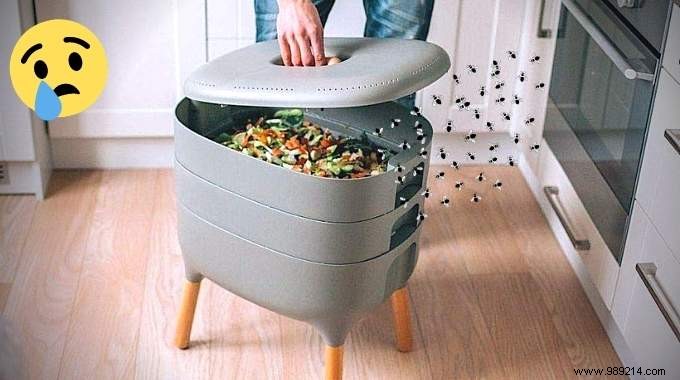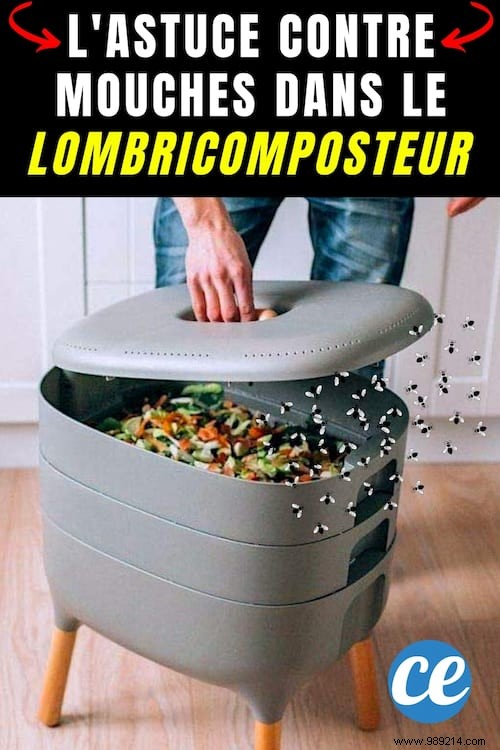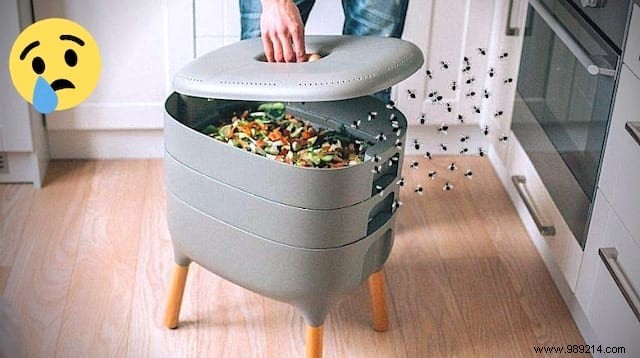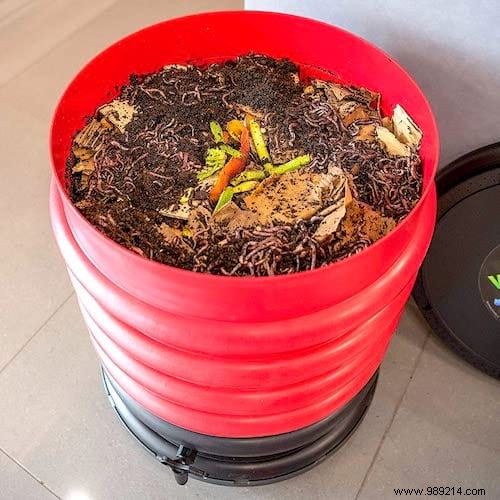
Is your vermicomposter invaded by flies and midges?
It's normal and it happens often especially when you open the lid.
Yet we have the impression of doing everything "right", the midges are still swarming...
Obviously, it's great to have a vermicomposter to recycle your waste, but we could do without flies!
Fortunately, there are simple and effective tips to prevent the proliferation of midges in the compost bin.
Here are 15 easy and effective tips for having a healthy and insect-free vermicomposter . Watch:

It is best to anticipate the arrival of flies and act preventively. Above all, they must not be given the slightest opportunity to come and nest in the vermicomposter.
Simple but really effective tip. With a closed lid, flies will not have the opportunity to lodge and lay eggs in your vermicomposter. So remember to close the lid tightly every time!
Do not leave your waste lying around on the work surface, the flies would have time to lay eggs on it, especially in summer. But throw them away immediately.
Another trick to prevent the arrival of flies is to hide the waste under a bit of cardboard. Since the flies are not the queens of the treasure hunt, they will go after things that are easier to eat! And since the cardboard is biodegradable, it doesn't matter for your compost.
Too late, the flies are here! That's okay, there's still time to get rid of it with these easy tricks.
Humidity and heat are the winning combo for flies to oviposit. So to prevent the composter from being too wet, add paper or cardboard, or even a shovel of sawdust. It absorbs moisture and odors.
Pass a damp sponge with a little white vinegar to eliminate the cocoons of flies. This limits their development.
Another trick to protect the bin from flies is to cover it with a tea towel or cloth. You can even put a few drops of lavender or lemongrass in it to repel insects.
It may be good to "no longer feed" the vermicomposter for a few weeks to put the flies on a diet. Thus, they will no longer lay eggs and the swarm will fade naturally.

To attract gnats and fruit flies, place a bottle with an old wine bottom near the vermicomposter. They will prefer wine to your compost bin. It also works with apple cider vinegar.
The idea of putting a towel between the two floors is an excellent idea to limit humidity.
You can put the container in the garden, on the terrace or in the cellar. Thus, you will no longer be inconvenienced by midges. Some condominiums even allow the vermicomposter to be placed in the courtyard of the building.
If your tub is made of wood, mix some black soap, a little water and a few drops of super lavandin. Then, brush the bin with this gooey, smelly repellent the flies will hate.
Another idea to remove moisture is to put some straw in the tray.
Regularly collect the juice produced by the worms and store it in bottles. This juice serves as a weedkiller if it is pure, or as a fertilizer if it is diluted in water. Decidedly, these verses are of formidable use!
Remember to clean the tray, lid or empty trays regularly with a jet of water and a brush. You can use vinegar water. This eliminates midge larvae and cleans the tank.
When the carpet of the last tray is damaged, remember to change it to better absorb moisture. A new carpet will also smother midge eggs and larvae.

If you haven't started vermicomposting yet, I'm here to help.
I've had one in my apartment in Annecy for 3 and a half years now and it's great.
Especially when there are no gnats around!
I have this vermicomposter at home (in the photo above) and I must say that it is super practical to use on a daily basis. I highly recommend it!